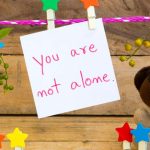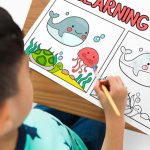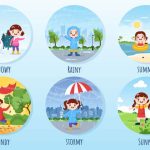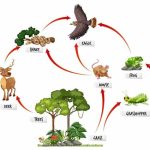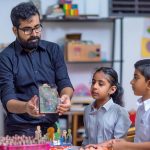Have you ever wondered how our body does so many amazing things every day, like running, laughing, breathing, or even thinking? It’s all thanks to the wonderful and hardworking body organs that make us who we are. Teaching body organs for kids is one of the most exciting and educational experiences for both teachers and parents.
Children are naturally curious about their bodies, how their heart beats, how their brain helps them think, or how their stomach digests food. By helping children learn about human body organs for kids, we nurture early science learning and a better understanding of themselves.
In this blog, we will explore the names and functions of body organs, learn the difference between internal organs and external organs, and share some fun facts and simple activities to make this topic enjoyable for young learners.
Understanding Body Organs for Kids
Our body is like a well-organised machine made up of different parts called organs. Each organ has a specific role that helps us stay healthy and active. Together, these organs form systems, like the digestive system, respiratory system, and circulatory system, that work as a team to keep everything running smoothly.
When children learn about body organs for kids, they begin to appreciate how their body works in harmony. They also develop awareness of healthy habits such as eating well, staying active, and practising hygiene to protect their organs.
External Organs of Human Body for Kids
External organs are the body parts we can see and touch. Teaching children about external organs of the human body for kids is a great starting point before moving on to internal ones. Here are some of the main external organs and their functions:
Organ | Function |
Skin | The largest organ of the body, it protects us from germs, regulates temperature, and allows us to feel touch, heat, and cold. |
Eyes | Help us see the world around us and recognise colours, shapes, and light. |
Ears | Allow us to hear sounds and help maintain balance. |
Nose | Helps us smell and also assists in breathing. |
Tongue | Enables us to taste food and helps in speaking. |
Hands | Allow us to touch, hold, and perform various activities. |
Legs | Help us stand, walk, run, and jump. |
Mouth | Used for eating, drinking, and talking. |
Understanding external organs helps children connect learning to everyday experiences. For example, asking them how their legs help them play or how their hands help them paint encourages active participation.
Read More – Teaching Human Body Systems to Students
Internal Organs of Human Body for Kids
After learning about external body parts, it’s time to explore the internal organs of the human body for kids. These are hidden inside the body but are vital for survival.
Organ | Function |
Brain | The control centre of the body. It helps us think, remember, and control all actions. |
Heart | Pumps blood throughout the body, carrying oxygen and nutrients to every cell. |
Lungs | Help us breathe by taking in oxygen and removing carbon dioxide. |
Stomach | Breaks down food into nutrients that the body can use. |
Liver | Cleans the blood, stores energy, and helps digest food. |
Kidneys | Filter waste from the blood and produce urine. |
Intestines (Small and Large) | Absorb nutrients and remove waste from the body. |
Bladder | Stores urine until it is released. |
Pancreas | Helps with digestion and controls blood sugar levels. |
Bones | Give shape and support to the body and protect vital organs. |
You can use a human body organs chart for kids or a human body organs diagram for kids to visually explain these functions. Visuals make it easier for children to remember what each organ does.
Read More – Best Body Parts Activities for Preschoolers
Functions of Body Organs for Kids
Each organ in our body plays a unique and essential role. When teaching the functions of body organs for kids, it helps to use fun comparisons:
- The brain is like a computer that sends and receives signals.
- The heart is like a pump that keeps everything flowing.
- The lungs are like air balloons that fill with oxygen.
- The stomach is like a blender that mixes and breaks down food.
- The skeleton is like the frame of a building, it keeps us upright.
By relating body organs to familiar objects, children can better visualise their importance and remember their roles.
Fun Learning Activities: Making Science Exciting
EuroKids believes learning should be joyful, hands-on, and engaging. That’s why teaching body organs for kids can be made interactive through creative activities:
1. Organ Chart Craft
Encourage children to make their own body organs chart for kids using coloured paper, drawings, and labels.
2. ‘Guess the Organ’ Game
Describe an organ’s function (“I pump blood all over the body!”) and ask children to guess which organ it is.
3. Human Body Puzzle
Use printable puzzles or cut-outs where children can assemble the human body and place organs in the right spots.
4. Storytime About Organs
Create short stories where organs talk about their jobs. For instance, “The Brave Heart” could be a story about how the heart keeps everyone alive.
5. Movement Activity
Link organ learning to movement, like jumping to show strong bones or taking deep breaths for healthy lungs.
These activities, inspired by the HEURÉKA Curriculum, make learning about human body organs for kids more enjoyable and memorable.
Read More – Body Tracing for Kids
The EuroKids HEURÉKA Curriculum: Learning through Discovery
At EuroKids, children are guided through the HEURÉKA Curriculum, a unique approach to early learning that promotes exploration, creativity, and conceptual understanding.
In this curriculum, topics such as internal and external organs of the human body for kids are taught through a blend of visual learning, storytelling, and hands-on play. Children are encouraged to ask questions, make connections, and learn through experience—helping them develop critical thinking and scientific curiosity from a young age.
The HEURÉKA Curriculum ensures that complex topics like the human body are simplified and delivered in a way that children can grasp easily. Learning about organs helps children build awareness about their health and bodies, fostering habits like eating nutritious food, staying active, and practising hygiene.
Health and Hygiene: Caring for Our Body Organs
Learning about body organs is not complete without teaching children how to care for them. Some key lessons include:
- Eating fruits, vegetables, and healthy foods to nourish the organs.
- Drinking plenty of water to help the kidneys and liver function properly.
- Exercising regularly to keep the heart, lungs, and muscles
- Getting enough sleep to give the brain and body time to rest.
- Practising hygiene, like washing hands, to keep the skin clean and germ-free.
These lessons not only strengthen understanding of body organs for kids but also build lifelong health habits.
Why Teaching Human Body Organs is Important in Preschool
Preschool is the foundation of lifelong learning. Introducing concepts like human body organs for kids at this stage encourages curiosity, observation, and respect for one’s body.
EuroKids integrates science-based lessons into daily learning in a way that feels natural and exciting. Children learn not just “what” but also “why,” preparing them for advanced topics later in school.
The EuroKids learning environment promotes interactive lessons where teachers guide students through models, visuals, and songs related to body organs chart for kids, helping them grasp complex ideas effortlessly.
EuroKids: Building Bright Futures
EuroKids is one of India’s most trusted names in early childhood education. With a legacy of over 20 years, it focuses on creating learning environments where every child feels curious, confident, and cared for.
If you’re a parent looking for a preschool that makes science fun and learning joyful, EuroKids is the right choice. The HEURÉKA Curriculum ensures that children not only learn about body organs for kids but also develop a deeper understanding of the world around them.
FAQs on Body Organs for Kids
Q1. What are the main internal organs of the human body for kids?
The main internal organs include the brain, heart, lungs, stomach, liver, kidneys, and intestines.
Q2. What are external body parts?
External body parts are those we can see, such as the eyes, nose, ears, skin, hands, and legs.
Q3. Why is it important for kids to learn about body organs?
It helps them understand how their body works and encourages healthy habits.
Q4. How can I make learning about body organs fun at home?
You can use body charts, puzzles, and storytelling to make the topic interesting and interactive.
Q5. What is the EuroKids HEURÉKA Curriculum?
It’s a scientifically designed curriculum that focuses on experiential learning and discovery, helping children explore and understand the world through play-based education.
Start Your Own Preschool with EuroKids
If you’re passionate about education and wish to contribute to the growth of young learners, you can explore the EuroKids Preschool Franchise Business.
EuroKids offers complete guidance on starting a preschool business with a proven model, strong brand presence, and the innovative HEURÉKA Curriculum. With expert support, franchisees receive assistance in preschool business planning, operations, and training, ensuring quality education and profitable growth.
Starting a daycare and preschool business with EuroKids is not only fulfilling but also financially rewarding. It’s one of the most promising opportunities for those looking to make a positive impact while building a sustainable business in India’s growing education sector.
Conclusion
Understanding body organs for kids is the first step towards helping children appreciate their bodies and health. With EuroKids, children learn through fun, exploration, and creativity, making education an exciting journey of discovery. For more such content, browse EuroKids Blogs.
Related Blogs
- All Body Parts for Kids with Fun Pictures & Activities
Help your little ones identify and understand different body parts through engaging visuals and interactive activities that make learning both fun and educational. - Facts About Human Body for Preschoolers
Discover interesting and age-appropriate facts about the human body that will spark your child’s curiosity and encourage them to learn more about how their body works. - Easy Body Awareness Activities for Kids
Explore playful and creative activities that teach children about body awareness, movement, and coordination while strengthening their understanding of how their body functions.







